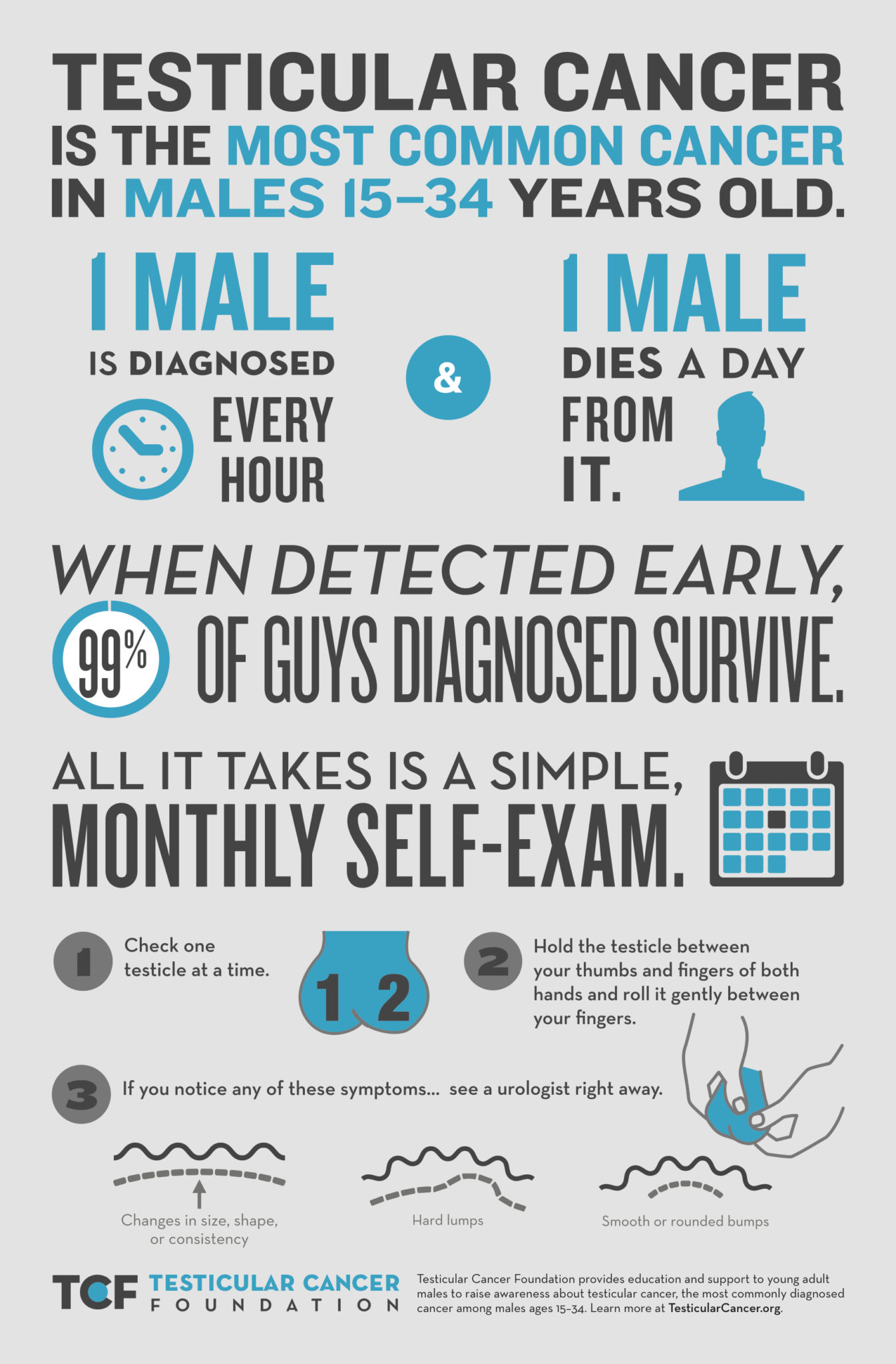April is Testicular Cancer Awareness Month
Testicular Cancer is the most common cancer diagnosed in men ages 15-35.
April is Testicular Cancer Awareness Month. The National Foundation for Cancer Research (NFCR) encourages men to learn the signs and symptoms of this serious illness, as well as take steps to help reduce their risk through proactive self-examination. It’s estimated that 9,610 men will be diagnosed with testicular cancer in 2021.
Learn About Testicular Cancer
Testicular cancers are relatively rare but highly curable, and occur predominantly in young and middle aged males. Testicular cancers were among the first types of cancers to be cured by radiation and/or chemotherapy, and treatment has been refined over the last two decades. Currently, over 70% of all patients are curable regardless of the extent of cancer. Thus, all treatment of testicular cancer is delivered with the intent to cure.
Testicular cancer is the most common cancer in men 15 to 35 years old. Men who have an undescended testicle (a testicle that has never moved down into the scrotum) are at higher risk of developing testicular cancer than men whose testicles have moved normally down into the scrotum. This is true even if surgery has been performed early in life to place the testicle in the appropriate place in the scrotum.
You can’t be sure you have testicular cancer based on symptoms alone, so it’s important to see a doctor about any testicular symptoms that concern you. Don’t wait.

Can I Prevent Testicular Cancer?
Unfortunately, there is no way to prevent TC, but a self-examination allows a person to identify TC in its earliest stage.The Testicular Cancer Society (TCS) recommends a monthly testicular self-examination to identify any changes in the testicles. This self-check includes the following steps:
1.
Check the scrotum. Examine the scrotum and look for any swelling on the skin. This should be done in front of a mirror, if possible. Also, it may be best to check after a warm shower or bath, as the scrotum likely will be relaxed at this point.
2.
Examine each testicle. Use both hands to examine each testicle. First, place the index and middle fingers under the testicle and place the thumbs on top of it. Next, firmly but gently move the testicle between the thumb and fingers; this allows you to feel for any irregularities on the testicle’s surface or texture.
3.
Evaluate the back of the testicle. Locate and examine the epididymis; this is a soft, rope-like structure on the back of the testicle. During your evaluation, check for anything that does not look or feel right.
What Are Some Symptoms?
The most common symptom of testicular cancer is a painless lump on or in a testicle. Sometimes the testicle may become swollen or larger, without a lump. (It’s normal for one testicle to be slightly larger than the other, and for one to hang lower than the other). Some testicular tumors might cause pain, but most of the time they do not. Men with testicular cancer may also have a heavy or aching feeling in the lower belly or scrotum.
Breast growth or soreness: In rare cases, testicular cancers can cause men’s breasts to grow or become sore. This is because certain types of testicular cancer can make high levels of hormones that develop the breasts.
Early signs of puberty in boys: Some testicular cancers make androgens (male sex hormones). This may not cause any specific symptoms in men, but in boys it can cause signs of puberty, such as a deepening of the voice and the growth of facial and body hair, abnormally early

